
These were my quick sketches for three different spoons. I decided to start with the most traditional one, so I snooped through the FWW shop scrap pile and found this nice piece of cherry.
The work of Josh Nava, specifically his 365spoons endeavor from the last year, and others that I follow on social media has inspired me to take some time and get my carve on. Now, spoon carving is not something I’ve done but I have spent an inordinate amount of time hacking away at sticks and logs since I was little. My hope was that with a little practice and some trial and error, this could be a new way to utilize all those scraps laying around the Fine Woodworking shop.
I’ll let my pictures take care of the walk-through, but I will say this: my hands hurt. I work with my hands a lot, whether it’s in the wood shop or turning a wrench, but carving really beat me up. My tools were sharp, but the dry cherry I was working with required a bit of force to work and I’m thinking my next spoon will be green cut to ease up on this as well as giving me a better finished surface.
Other than the hand trauma, I had a killer time carving this. Beign able to free-shape something from wood is awesome compared to the precision of dovetails and mortise and tenon joints. If any readers have any tips or tricks for carving, feel free to reply. I’d love to hear them!

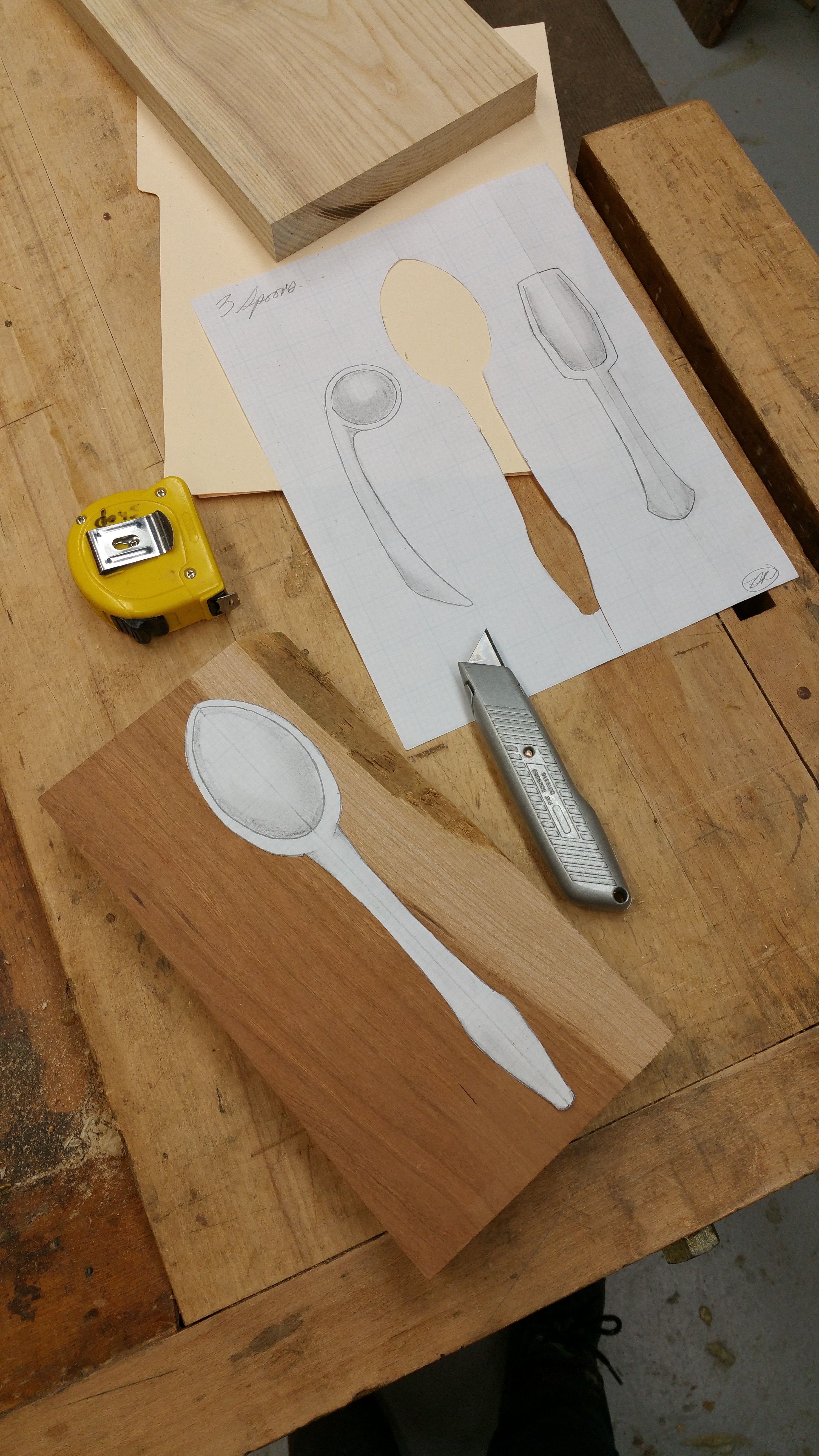
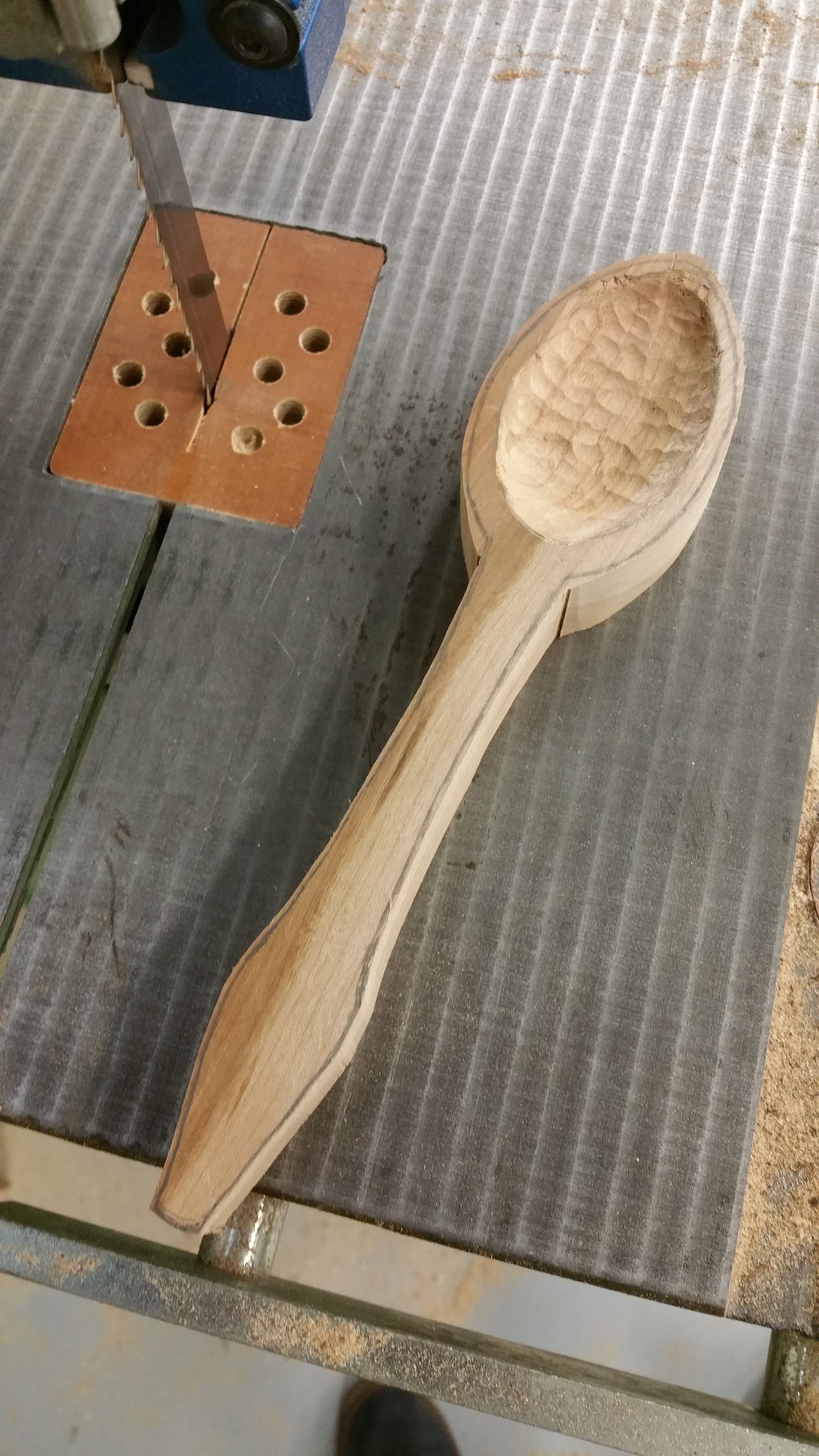
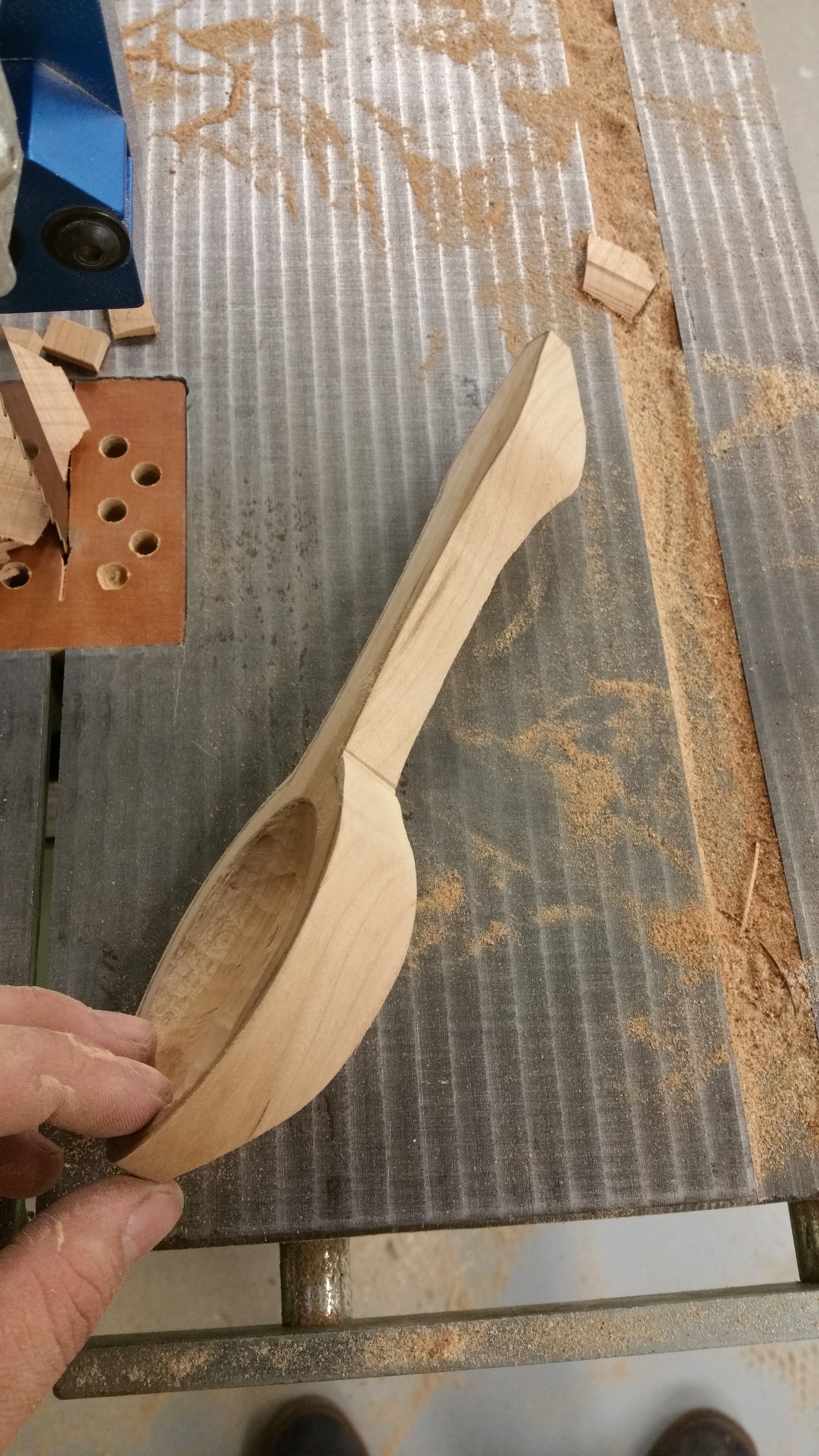
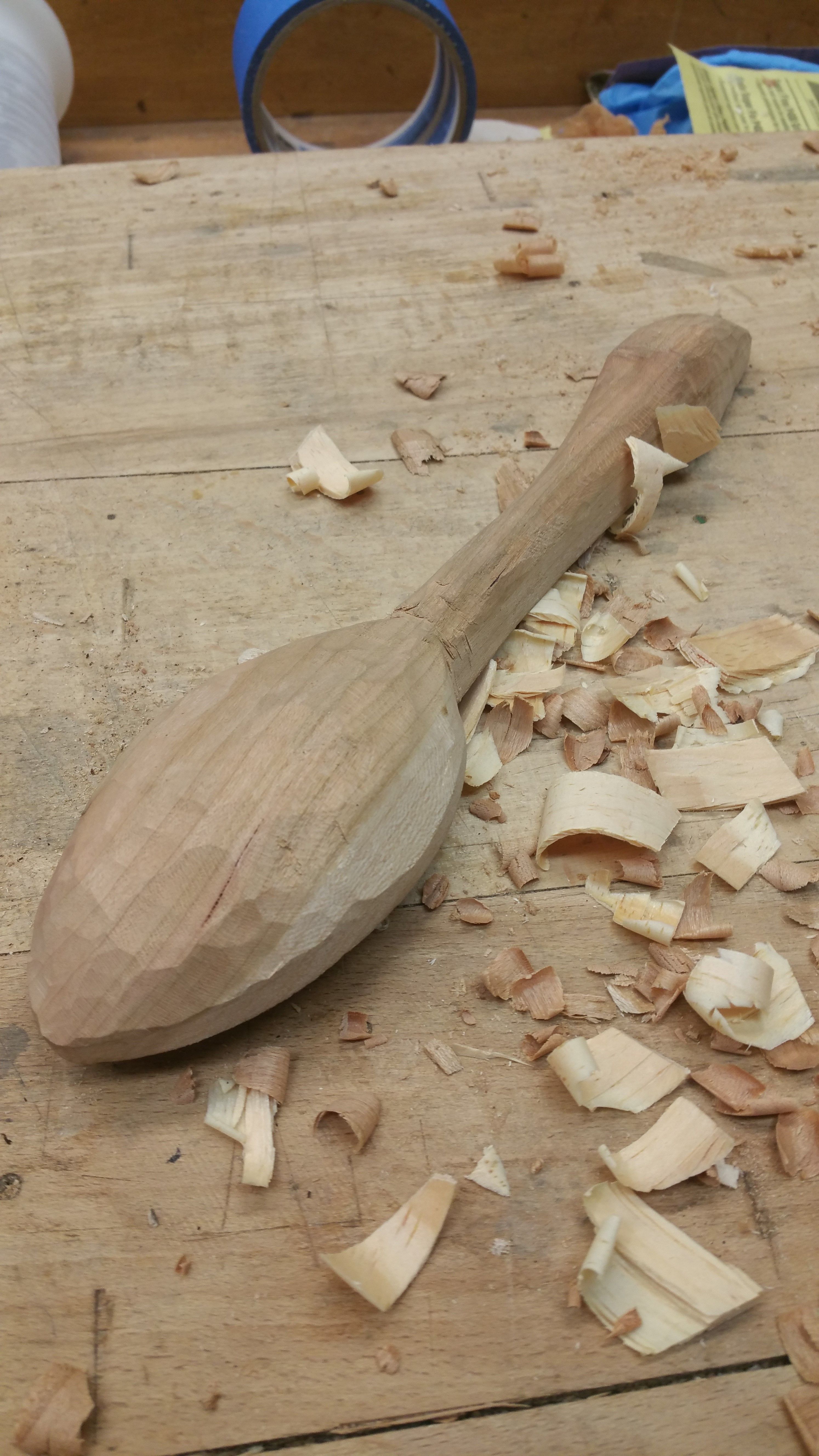
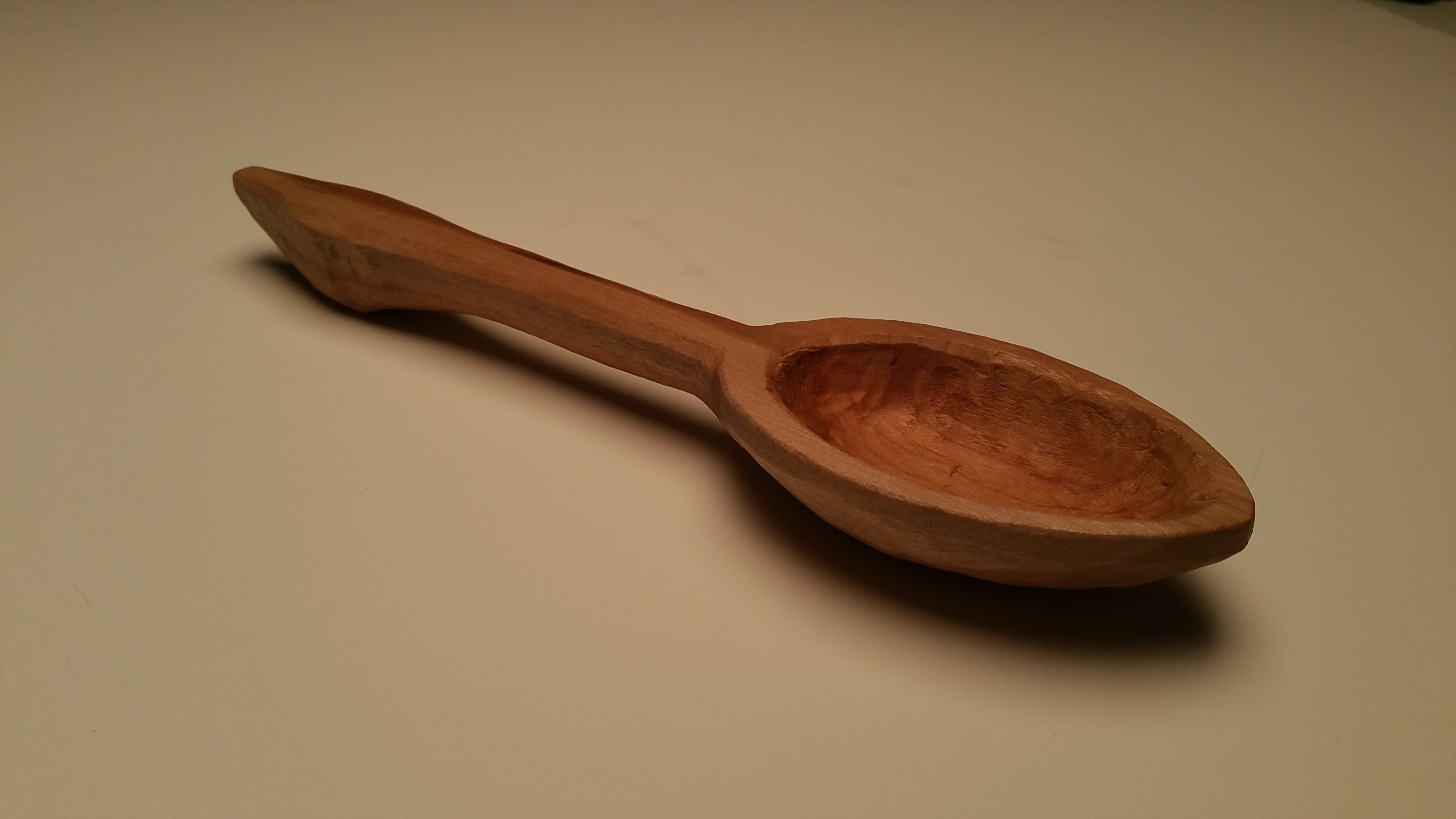
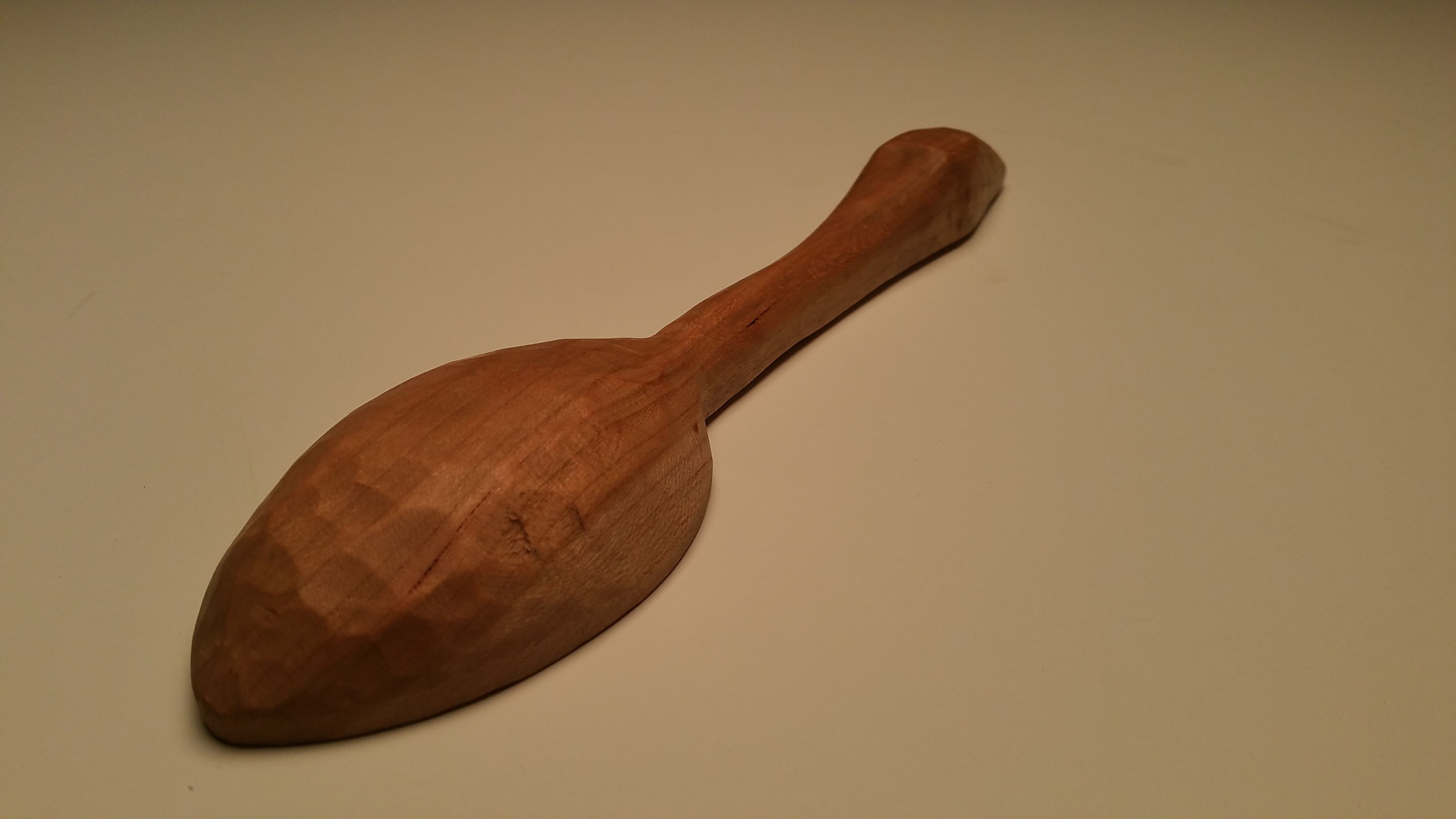
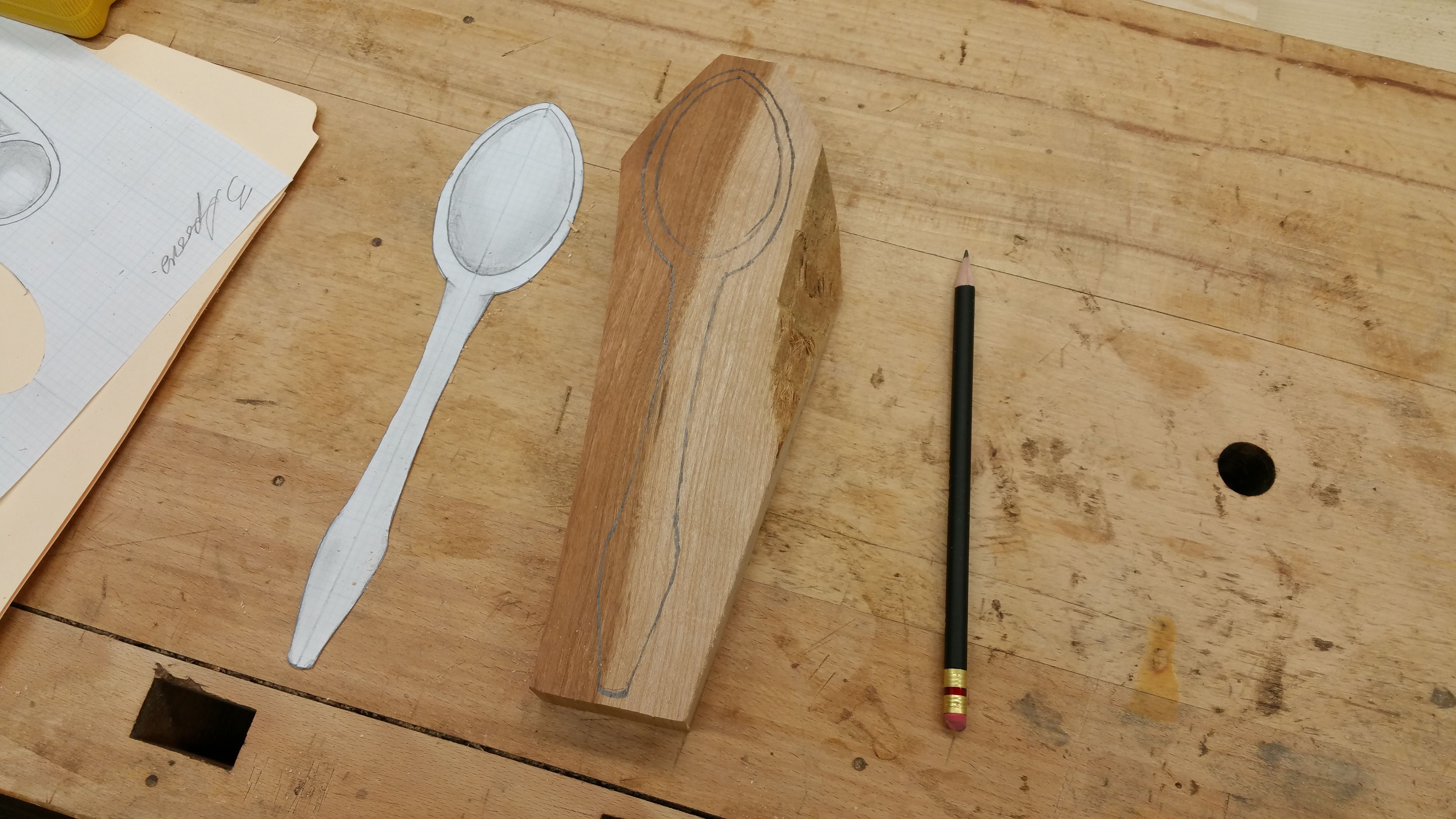







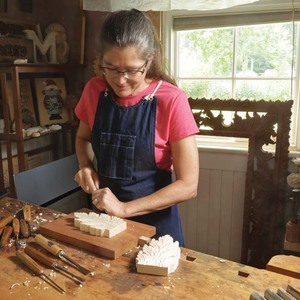
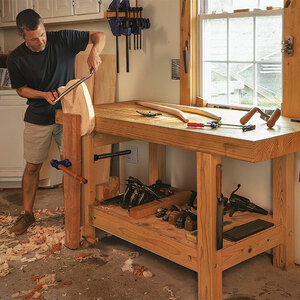
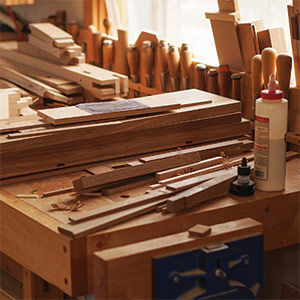











Comments
Wow. Starting to carve in cherry is like starting to exercise with 100 lb weights.
Are you using a knife, a bent knife, or a spoon gouge. For beginners I'd recommend chisels/gouges (and for spoons a spoon gouge), and a small light brass mallet. For cherry, it's darn tough to do - use either a bent/crooked knife with an 8" or longer handle, or use the gouges a mallet and above all secure your work somehow.
Good luck. Next time try basswood, or pine, or even birch if you have to.
Use a hook knife to cut across the grain to hollow out the bowl section of the spoon. I would avoid using a gouge to start with, it's too easy to slip and injure yourself. Use green wood or if your stock is dry, wrap it in a wet paper towel and put it in a ziplock for a day or so to soften up the fibers. Carving dry cherry is like trying to knead frozen pizza dough.
Several years ago I was involved with some remodeling work at the church I attended. We had to remove several tree: cherry, hard maple, hickory and soft maple. With all this green wood at my hand. I decided I would carve spoons as gifts to various members of the church that helped with the work.
No doubt green wood is easier to carve but one must me careful of the design because of shrinkage and checking. Splintering is also a problem but can be overcome with well placed stop cuts.
All the spoons were shaped and carved only using hand tools; hatchet, sloyd crook knife and sloyd knife. After drying file and rasps were used for final work.
What I discovered - by using hands tools I was able to find the spoon in the wood as I went along. The result was a variety of shapes, grain patterns, wood colors, and types of spoon. Cherry, hard maple and soft maple created the best results with cherry being the best overall. Hickory did not work well. I also discovered it was a wonderful way to spend a cold mountain winter,
Never mind that it's not polished, it looks pretty good and authentic. Quite a challenge you gave yourself, keep up the good work :)
Log in or create an account to post a comment.
Sign up Log in